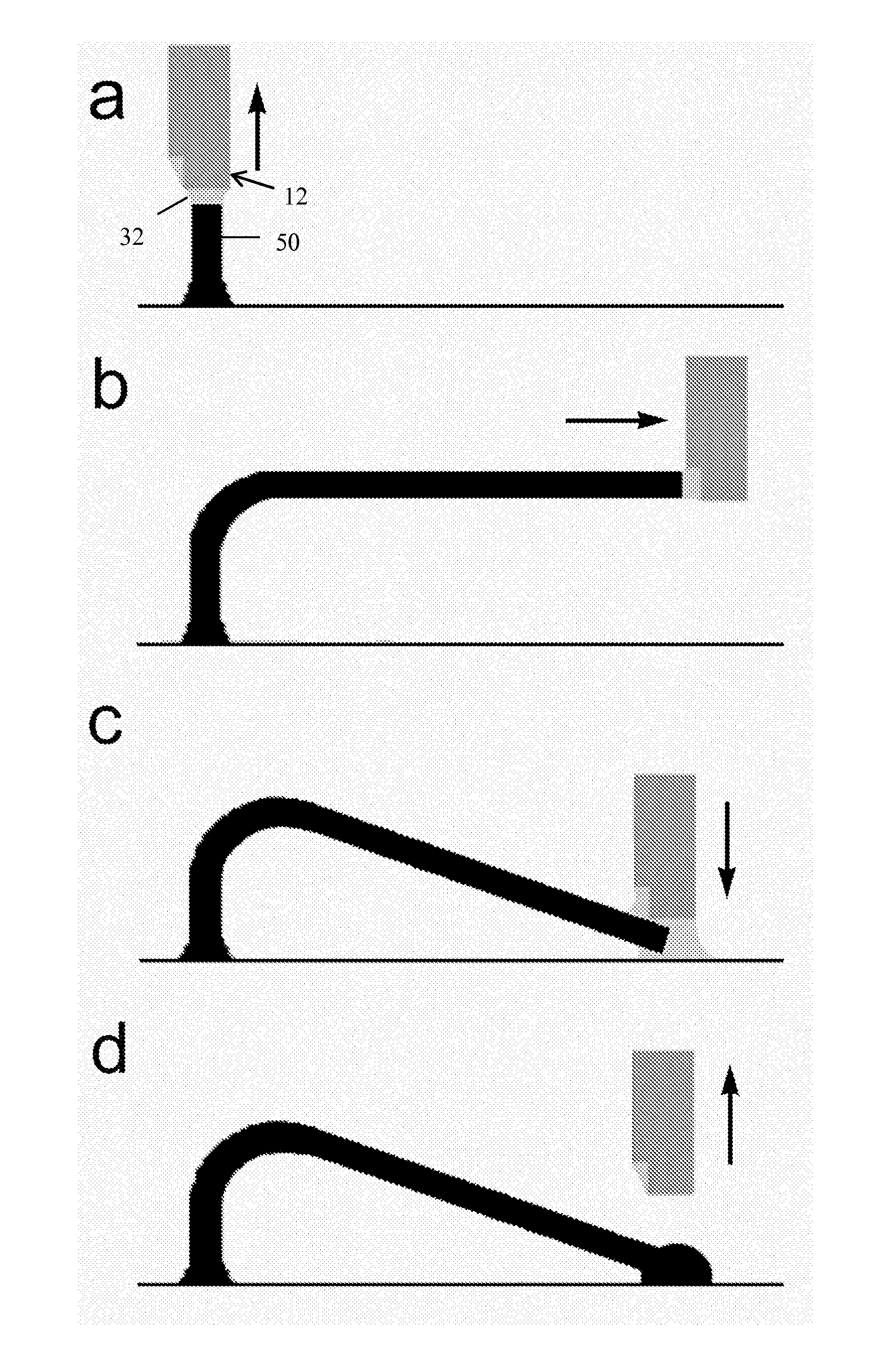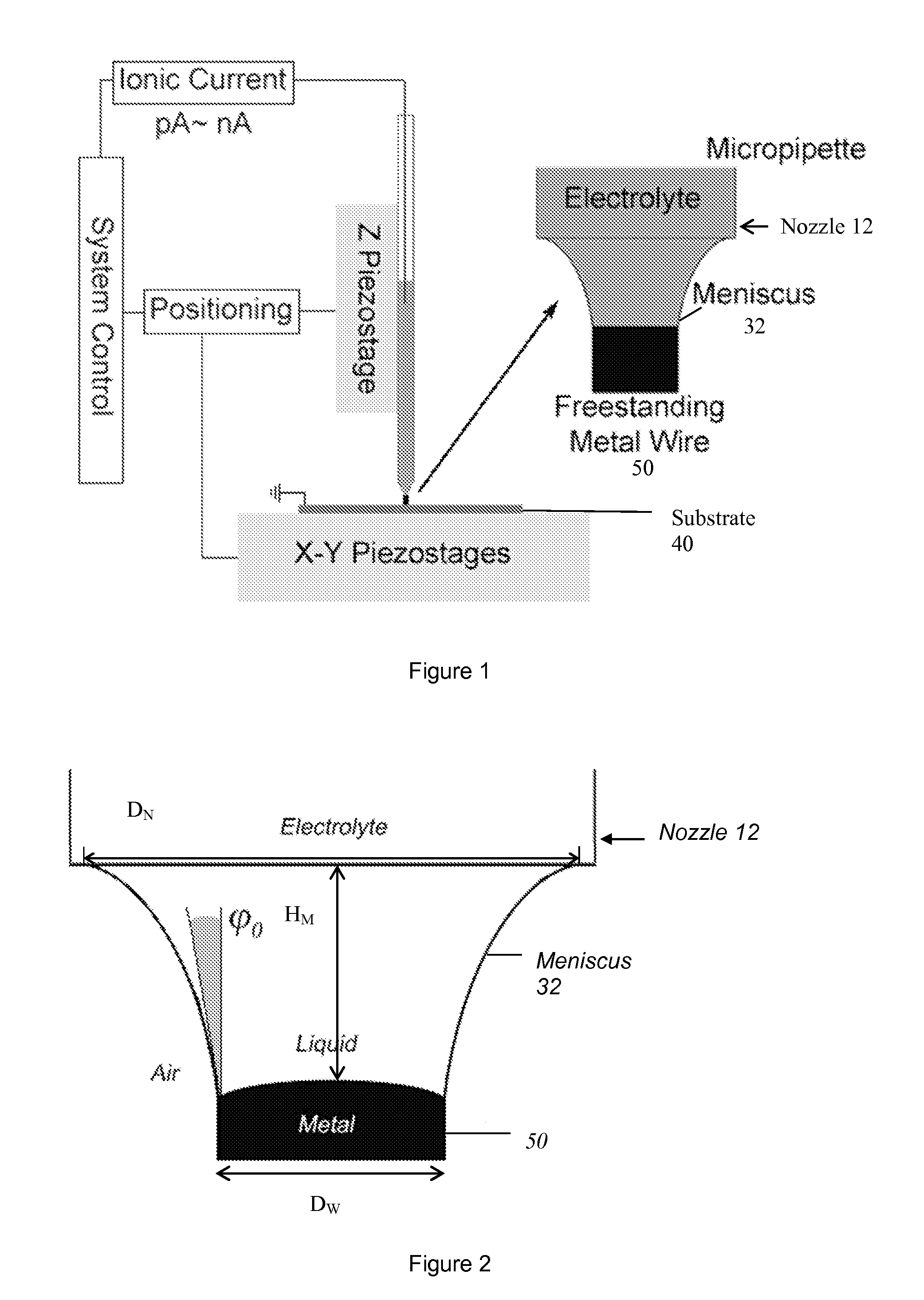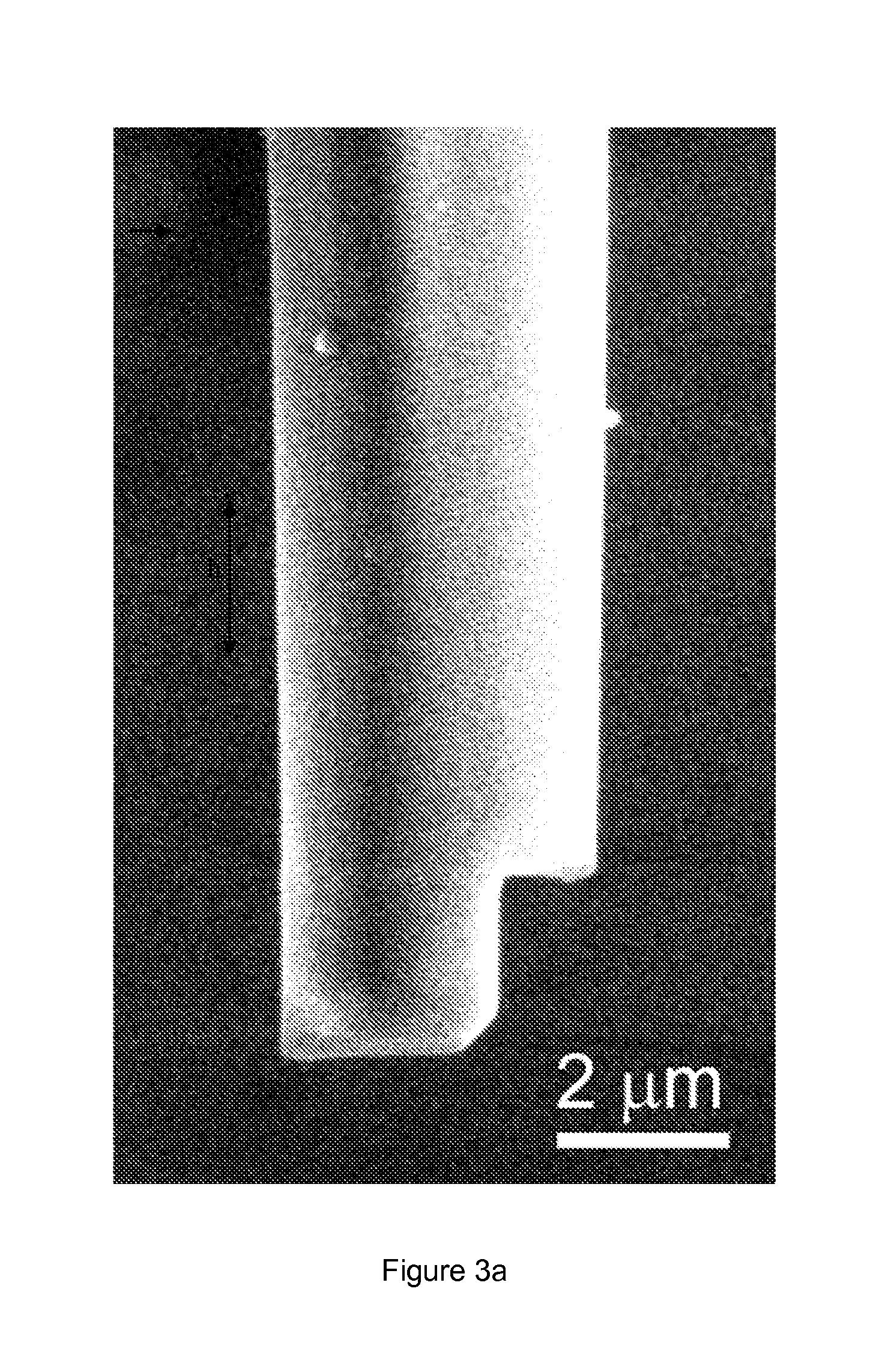Electrochemical methods for wire bonding
a technology of electrochemical methods and wire bonding, which is applied in the direction of fastening means, manufacturing tools, mechanical equipment, etc., can solve the problems of difficult or expensive fabrication with traditional lithography, and achieve the effects of reducing size, improving electrical and mechanical qualities, and low cos
- Summary
- Abstract
- Description
- Claims
- Application Information
AI Technical Summary
Benefits of technology
Problems solved by technology
Method used
Image
Examples
example 1
Fabrication of Nanostructures
[0136]FIG. 4 shows a series of angled Cu wires grown with a side-cut nozzle as shown in FIG. 3a. The vertical and lateral lengths as well as the orientation of the Cu wires were controlled by the travel path of the micropipette, and the diameter determined by the nozzle size and the size of the side opening in the nozzle. To fabricate these structures, a micropipette filled with a simple 0.05 M CuSO4 aqueous solution with no other additives was used and biased at 0.2 V with respect to the Au-coated sample surface. The micropipette had a nozzle diameter of ˜3 μm and had a side cut made with the focused ion beam machining. The growth rate for the Cu wire at those conditions was ˜0.25 μm / s, and the corresponding ionic current was maintained at ˜3.5 nA. The deposition was carried out with the substrate exposed to a humidity controlled ambient air environment at room temperature.
[0137]FIGS. 9A-D illustrates various structures made using meniscus-confined elec...
example 2
Interconnect Bridge Fabrication
[0138]To facilitate the interconnect bridge fabrication with a method that involves the lateral growth of a metallic wire over a sufficient span, the micropipette nozzle was shaped to allow additionally the stable meniscus formation sideway to the nozzle during the lateral growth of metallic wire. FIG. 3a shows a typical shaped micropipette nozzle having a nozzle diameter of about 3 μm. Micropipettes having other nozzle diameters can also be shaped depending on the size of the wire to be fabricated. For fabricating Cu wire bonds, typically a simple 0.05 M CuSO4 aqueous solution with no other additives was used and filled into a micropipette and biased at 0.2 V with respect to the conductive sample surface. The deposition was carried out with the substrate exposed to a humidity controlled ambient air environment at room temperature.
[0139]To complete a wire bonding process (as schematically described in FIGS. 6a-d), the second bond was formed by mechanic...
example 3
Meniscus Stability Calculations
[0145]To maintain the growth of a uniform diameter wire, the thermodynamic consideration of the interfacial forces at the three-phase contact line between the meniscus and the growing wire requires the classical Neumann quadrilateral relation to be met(18), which would then require the establishment of an equilibrium angle φ0 between the growth direction and the slope of the meniscus at the contact line (as shown in the inset in FIG. 1 and in FIG. 2):
φ0=arccos[γL2+γS2−γSL2) / 2γLγS], (1)
Where γL and γS are the surface energies of the electrolyte and the metal wire and γSL is the interfacial energy of the metal / liquid interface. This angle is determined to be ˜12° for the copper-water-air system (taking γL=0.07119 J / m2, γS=0.71±0.18 J / m2, γSL=0.01456 J / m2)(19, 20). Solving the meniscus shape equations then defines that there exists a region of stability for the stable growth of a uniform diameter wire governed by (21):
HMDW=12cosϕ0[cosh-1DNDWcosϕ0-cosh-1...
PUM
| Property | Measurement | Unit |
|---|---|---|
| size | aaaaa | aaaaa |
| pressure | aaaaa | aaaaa |
| humidity | aaaaa | aaaaa |
Abstract
Description
Claims
Application Information
 Login to View More
Login to View More - R&D
- Intellectual Property
- Life Sciences
- Materials
- Tech Scout
- Unparalleled Data Quality
- Higher Quality Content
- 60% Fewer Hallucinations
Browse by: Latest US Patents, China's latest patents, Technical Efficacy Thesaurus, Application Domain, Technology Topic, Popular Technical Reports.
© 2025 PatSnap. All rights reserved.Legal|Privacy policy|Modern Slavery Act Transparency Statement|Sitemap|About US| Contact US: help@patsnap.com



